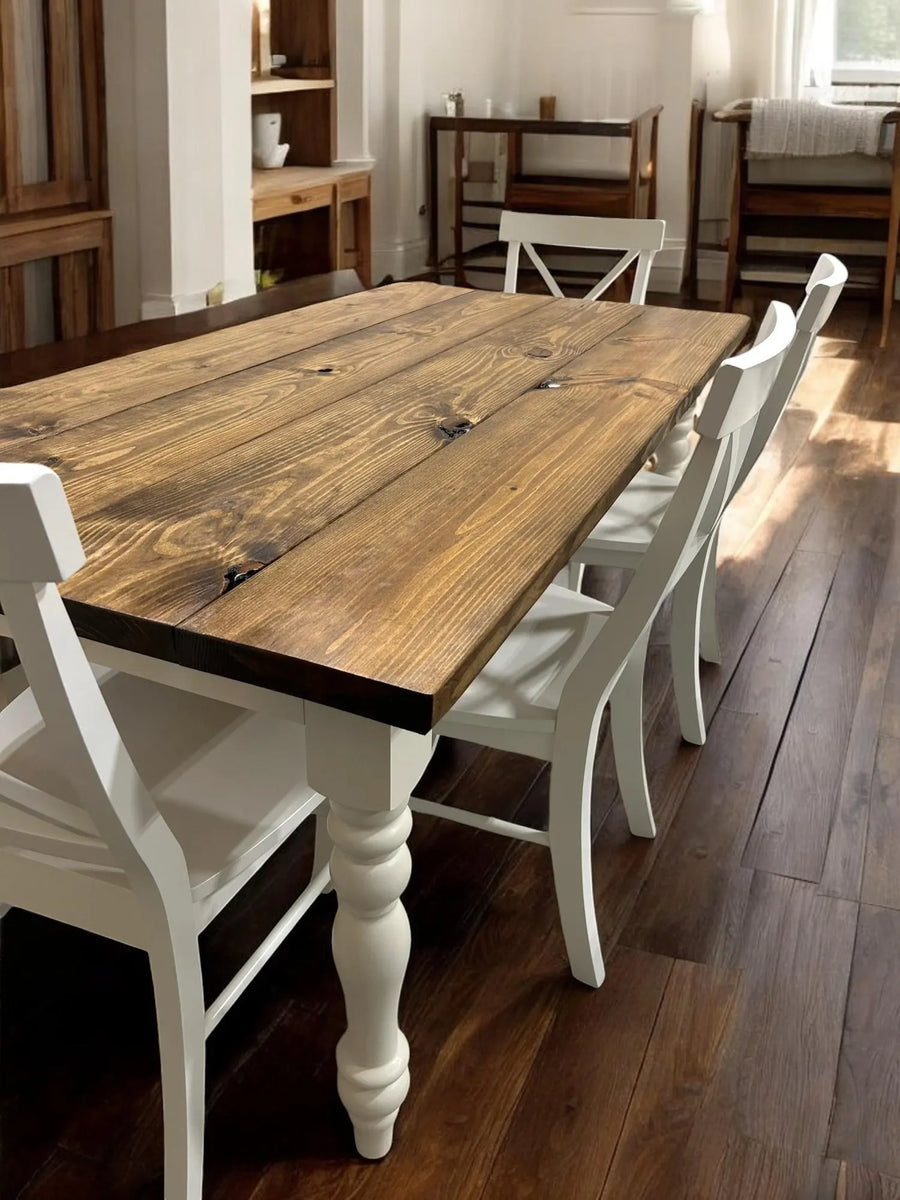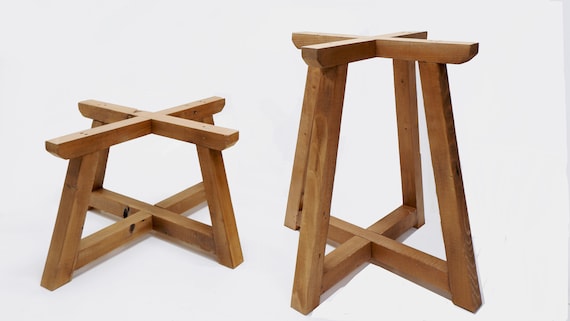Discovering the Different Kinds Of Table Legs Wood for Your Dining Room
The selection of dining table legs timber can greatly influence both the useful and aesthetic high qualities of your dining area. Strong timber options, such as oak and walnut, provide a traditional appearance with unparalleled sturdiness, while crafted timber options supply innovative designs that mimic the richness of all-natural grains.
Strong Wood Options

In addition, solid timber is renowned for its strength and longevity. Unlike engineered materials, solid wood is less prone to bending and damages with time when correctly preserved. This makes it an ideal choice for households or those that regularly organize gatherings. Each piece of solid wood is special, showcasing specific characteristics that add to the charm and character of the dining table.
Furthermore, solid wood can be ended up in countless means, varying from all-natural oils to discolored surfaces, enabling property owners to customize their furniture to match their decor. In recap, picking strong wood for eating table legs not just makes sure architectural integrity yet additionally enhances the visual allure of the eating location, making it a rewarding investment for any home.
Engineered Wood Alternatives

Plywood, created from numerous layers of wood veneer, is stable and specifically strong, making it an excellent selection for dining table legs. Its layered composition allows it to stand up to modifications in moisture and temperature level better than typical solid timber. MDF, on the other hand, supplies a smooth surface for paint or veneering, enabling developers to attain a refined look while keeping structural integrity.
When picking crafted wood alternatives, it is necessary to take into consideration the intended use and desired aesthetic. These products not just boost the capability of eating spaces but also permit for greater design flexibility, guaranteeing that modern and standard styles can coexist sympathetically.
Reclaimed Timber Includes
Redeemed timber uses an unique mix of sustainability and character, making it a progressively popular choice for eating table legs. Sourced from old barns, factories, and other structures, reclaimed wood personifies a background that new materials simply can not replicate. Each item lugs its very own story, noted by distinctive blemishes, knots, and differing grain patterns, which contribute to a table's unique aesthetic allure.
Along with its visual charm, redeemed timber is an eco-friendly option. By repurposing formerly made use of materials, it reduces the need for brand-new lumber, therefore helping to preserve woodlands and lessen waste. This straightens with a growing customer preference for sustainable techniques in home furnishings.
Furthermore, reclaimed timber is typically much more resilient than recently gathered wood because of its age. The all-natural drying procedure that recovered wood undergoes outcomes in a denser and stronger product, making it less susceptible to bending and splitting. This enhances the long life of dining tables, permitting them to stand up to the roughness of everyday usage.
Softwood vs. Hardwood
When picking eating table legs, understanding the distinctions in between softwood and wood is essential for attaining both functional and visual goals. They usually show a more rustic look, useful source making them ideal for informal or country-style dining areas.
On the other hand, hardwoods, sourced from deciduous trees like maple, cherry, and oak, are renowned for their thickness, toughness, and durability. The intricate grain patterns and rich colors of hardwoods offer a ageless and advanced charm, making them suitable for official dining setups. While hardwoods have a tendency to be much more costly and much heavier, their durability versus damage usually warrants the financial investment.
Ultimately, the choice in between softwood and wood for dining table legs ought to align with your layout vision, usage demands, and navigate to this website spending plan, making sure that your eating room mirrors your individual style while remaining functional with time.

Surfaces and Treatments
The aesthetic charm and long life of table legs can be significantly enhanced through various surfaces and treatments. These procedures not just safeguard the timber from damages however likewise boost its look, enabling it to complement diverse interior styles.
One usual therapy is discoloring, which passes through the timber and boosts its all-natural grain while including shade. Spots provide a rich, classy appearance, making it possible for homeowners to match their furnishings with existing decoration. On the other hand, clear finishes such as polyurethane or varnish develop a protective layer without altering the timber's initial shade, ensuring longevity versus wear and tear.
In addition, all-natural oils, like tung or linseed oil, nourish the wood and supply a subtle sheen, all while being environmentally friendly. These oils allow the surface area to breathe, protecting against dampness accumulation and possible bending.
For those seeking a rustic beauty, distressed or weather-beaten coatings can be put on create an aged appearance, adding character to the item. Inevitably, the option of treatments and coatings depends on individual preference, wanted visual appeals, and the details wood kind, making it vital to consider these aspects when picking useful reference dining table legs for your area.
Conclusion
Finally, the choice of eating table leg materials substantially influences both the functional and visual elements of an eating space. Solid timbers, engineered choices, and redeemed choices each offer unique benefits, dealing with different choices and needs. Comprehending the distinctions between hardwoods and softwoods, in addition to proper coatings and treatments, permits notified decision-making. Inevitably, the choice of wood type should align with preferred style, resilience, and ecological factors to consider, boosting the total eating experience.
The option of eating table legs wood can greatly influence both the aesthetic and practical qualities of your eating area - Dining Table Legs Wood. Solid wood options, such as oak and walnut, provide a classic look with unrivaled sturdiness, while engineered timber options provide innovative layouts that resemble the richness of natural grains. Strong timber supplies an ageless high quality that can raise the general design of an eating area. Each piece of strong timber is special, showcasing private attributes that add to the beauty and personality of the eating table
Furthermore, redeemed wood is commonly more resilient than newly gathered wood due to its age.
Comments on “Durable Craftsmanship in Every Piece of Dining Table Legs Wood Available”